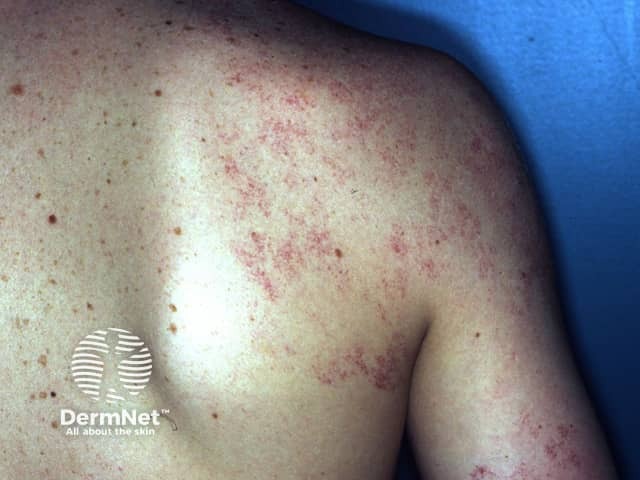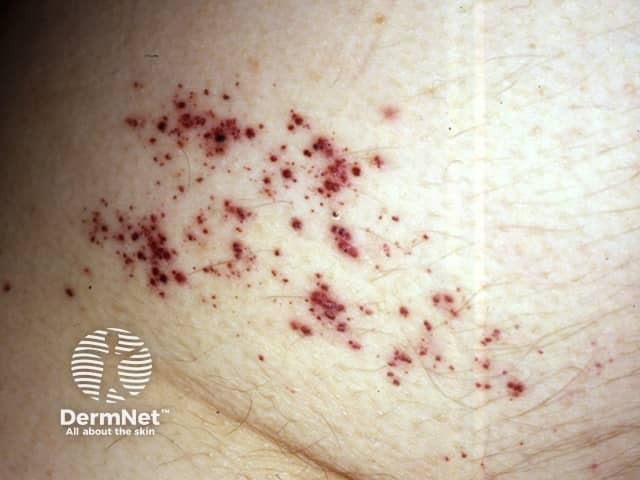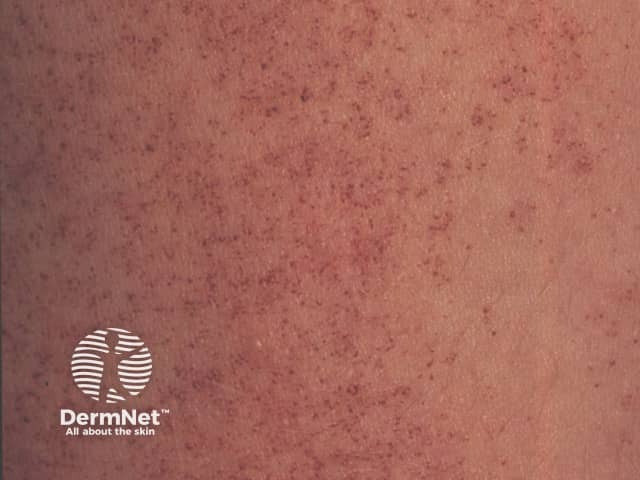Main menu
Common skin conditions

NEWS
Join DermNet PRO
Read more
Quick links
Angioma serpiginosum is a skin condition in which there are small blood vessels near the skin surface. It presents as small red dots (puncta) that cluster together to form a linear or snake-like array (serpiginous pattern) or ring-shaped (gyrate) pattern. There is no bleeding, inflammation or pigmentation.

Angioma serpiginosum

Angioma serpiginosum

Angioma serpiginosum
Angioma serpiginosum may occur anywhere on the body but most often appears on the buttocks and legs. Mucous membranes, palms and soles are usually not affected.
The condition starts in early childhood as one or more small lesions that grow over a period of months or years. Usually as a child reaches puberty, the patches stop growing and remain unchanged throughout life. Rarely, they partially or completely disappear.
The cause of angioma serpiginosum remains unclear but it may possibly be an inherited condition. Ninety percent arise in females and 80% are affected before they are 20 years old. In some cases angioma serpiginosum is present at birth.
Angioma serpiginosum is a harmless condition that does not require medical treatment. Treatment with a vascular laser may be performed for cosmetic reasons.
Book: Textbook of Dermatology. Ed Rook A, Wilkinson DS, Ebling FJB, Champion RH, Burton JL. Fourth edition. Blackwell Scientific Publications.